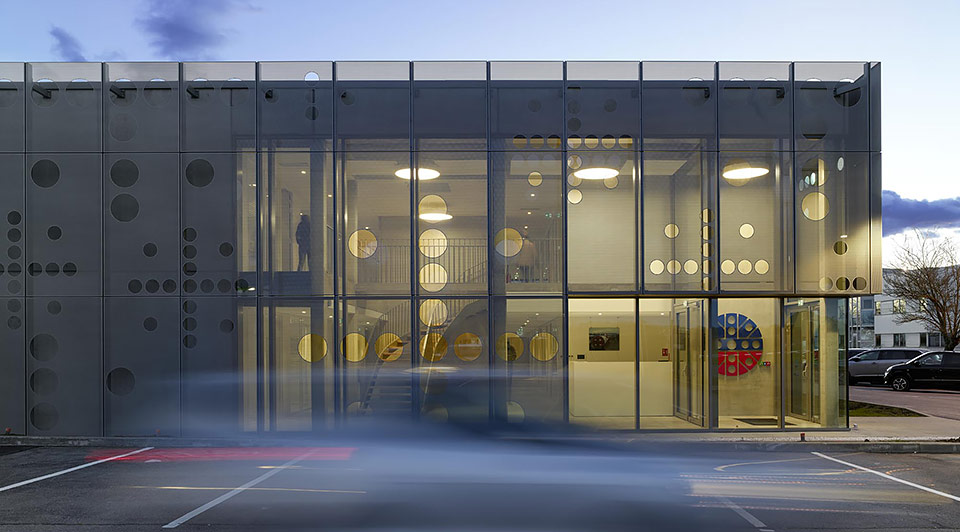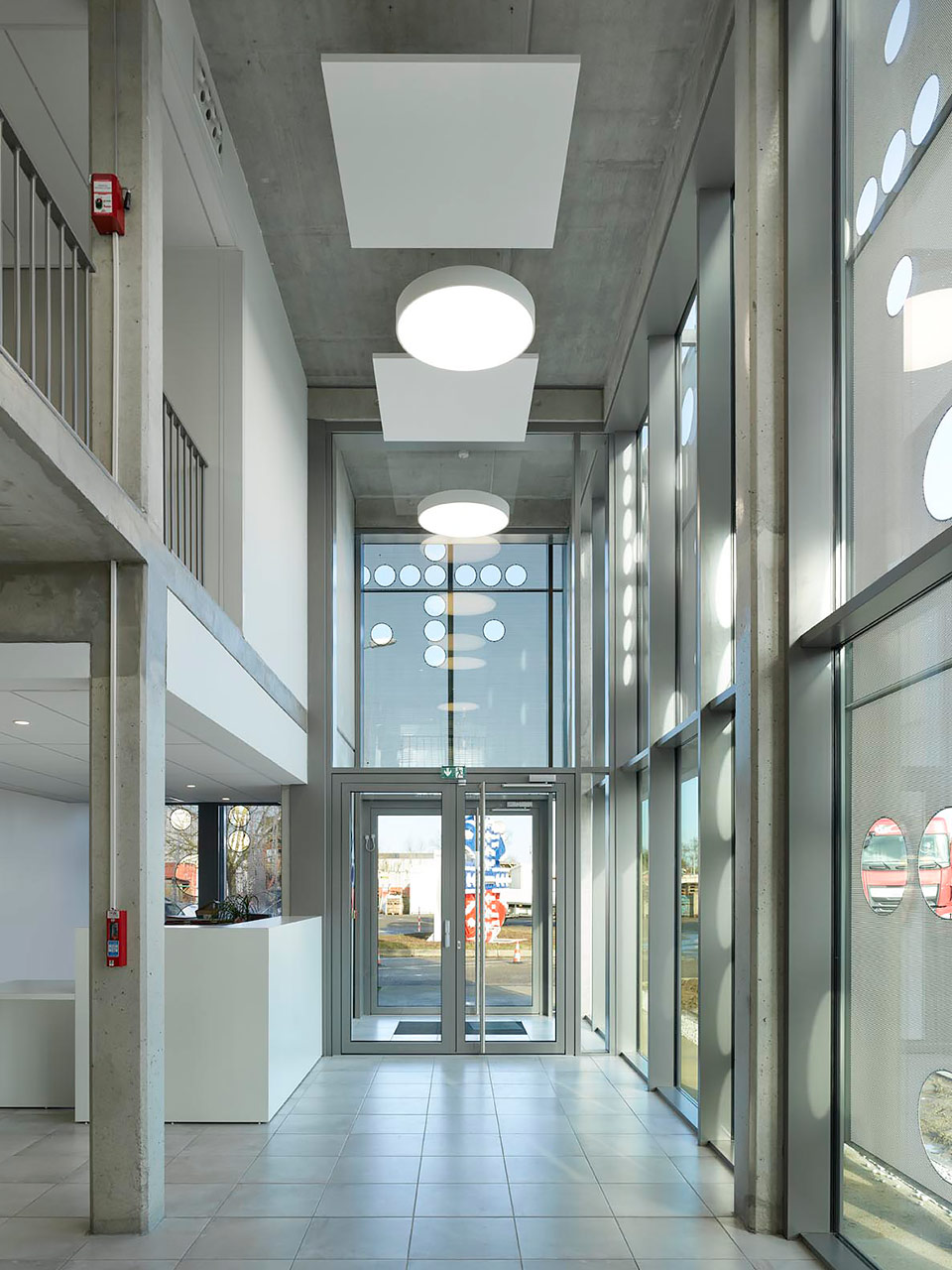Worldwide Sites
You have been detected as being from . Where applicable, you can see country-specific product information, offers, and pricing.
Keyboard ALT + g to toggle grid overlay
Taillandier Architectes Associés introduces engineering and construction partners to new workflows
Based in Saint-Jory, France, Bessac specializes in delivering complex tunneling for water, transportation, and other infrastructure projects. When Bessac’s leaders decided to build a new headquarters, they wanted the building to reflect the company’s reputation for innovation in the field of tunneling. Taillandier Architectes Associés rose to the challenge, designing a striking cube-like building that features a system of concrete, aluminum-framed glazing, and perforated metal panel facades. To keep the combination of prefabricated and site-constructed elements coordinated, Taillandier turned to BIM (Building Information Modeling) with Revit building design software—even though none of the other project participants had experience with model-based design.
3D design for projects of every size
Taillandier Architectes works with a variety of public and private sector clients from its base in Toulouse. Since its founding in 1993, the firm has focused on taking a fresh approach to creating design programs that achieve clients’ needs and goals. On the Bessac project, the Taillandier team developed a design that reflected the company’s leadership in tunneling by cladding the building in metal panels with perforations that create tunnel-like light effects.
The 8,300-square-foot building required close coordination with the project engineers, BETEM, and the structural firm, T.H.B.I. That’s because the elements in the complex façade system had to line up perfectly. Some portions, like the metal panels and concrete walls, called for off-site prefabrication by different manufacturers. Other portions of the project had to be built on-site, and all the required access points for plumbing and electrical needed to line up. Otherwise, the project would require potentially expensive and time-consuming rework. Taillandier Architectes required the use of 3D design models and Revit across the project team—even though many project contributors only had experience with 2D tools.
“Some people associate BIM and Revit with large projects, but projects of every size can experience the improved coordination and better communication intelligent models help enable,” says Lucie Addé, BIM team leader with Taillandier Architectes on the project. “On the Bessac project, our firm decided to advocate for the use of 3D design models created in Revit in order to remove some of the uncertainly and risk that can accompany interesting designs.”
Modeling gains support across team
As Taillandier encouraged the team to use BIM, they were met with some resistance. The firm also found that it had a strong supporter—the client. The Bessac review team liked the idea of being able to provide comments and feedback on 3D models. Plus, the Bessac team saw how using 3D models had the potential to help make construction more predictable while freeing Taillandier to create an innovative concept.

Image courtesy of Taillandier Architectes Associés
“The client supported the requirement that the team use Revit,” says Addé. “After some initial reluctance, every partner dedicated the resources required to develop their in-house modeling skills. New users quickly saw that BIM helps make projects more successful for everyone.”
She adds that the client was enthusiastic about using models throughout the project: “From design concept reviews to final approvals, the client provided feedback that helped them feel involved in the evolution of the design. The client could easily see the progress of the Revit models. When we needed to provide photorealistic detail, we used the Autodesk Cloud Rendering service. It let us take advantage of cloud processing power while using our in-house computer power for design.”
“Some people associate BIM and Revit with large projects, but projects of every size can experience the improved coordination and better communication that intelligent models help enable.”
—Lucie Addé, BIM Team Leader, Taillandier Architectes Associés
Workflow contributes to flawless prefab
The Taillandier team worked from work-shared Revit models and multiple linked Revit files created by the structural and MEP engineers. This helped coordinate designs. To address harder-to-spot issues, the team used Navisworks Manage software to aggregate all models and find interferences. When it came time to construct the project, the team used workset tools in Revit to organize the models around 15 different building trades. This helped the contractors coordinate with each other and generate shop drawings faster.
The team used a collaborative workflow to develop the prefabricated concrete walls, with the architects and engineers exchanging and overlaying each other’s models to arrive at the final production model. A similar process helped ensure that the shop drawing for the perforated metal panels conformed to the initial design intent. When it came time to assemble the prefabricated walls and panels, the material quickly came together with the project’s site-built portions.

Image courtesy of Taillandier Architectes Associés
“The use of Revit across the project team was key,” says Addé. “Once the main electrical and water supplies were set in the panels and walls, we couldn’t change their position. We couldn’t afford any flaws, and there were none. Prefabrication helped us expand the types of materials used on the project, and it also helped reduce material and transport waste.”
Reflecting on the project, Addé says, “BIM with Revit and Navisworks Manage provided a global consistency throughout the project. This project shows the effectiveness of BIM for a local, relatively small-scale project. It opens up more possibilities for interesting and ambitious designs on a wider range of projects.”
See what Revit can do
Multidisciplinary BIM software for higher quality, coordinated designs